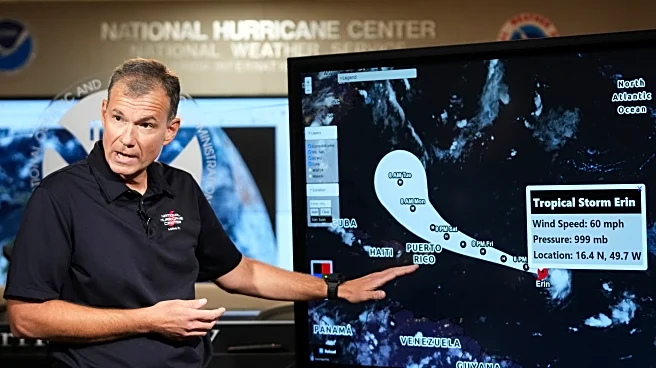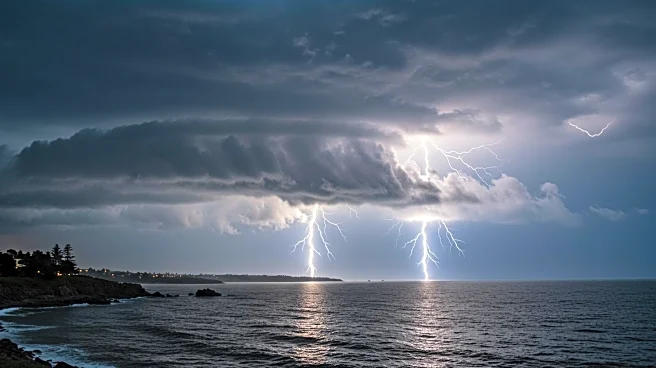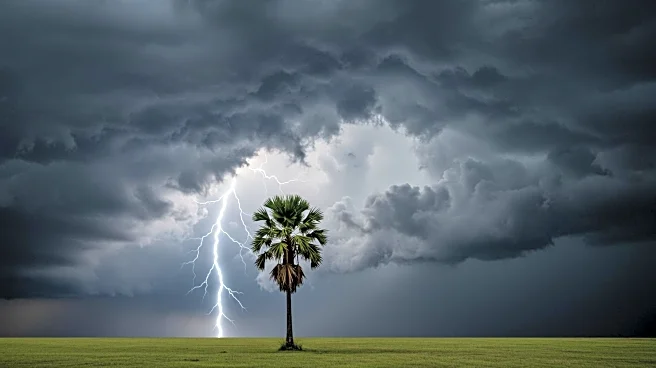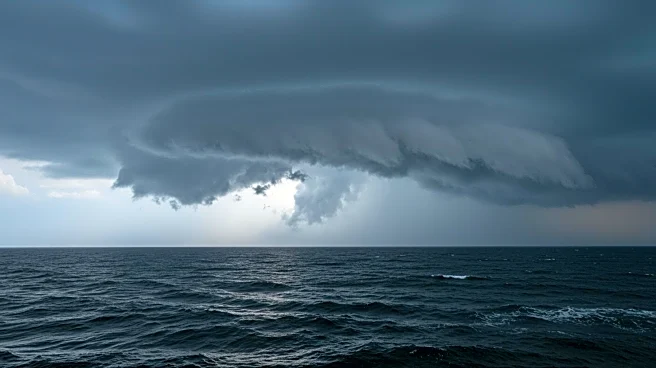What is the story about?
What's Happening?
Tropical Storm Erin has intensified into a Category 1 hurricane, marking the Atlantic's first hurricane of the season. With sustained winds of 85 mph, Erin is located over 300 miles east of the northeastern Caribbean's Leeward Islands. The National Hurricane Center forecasts that Erin will rapidly intensify, potentially reaching Category 3 status by Saturday night and Category 4 by Sunday night. The hurricane is expected to pass north of the Leeward Islands, Virgin Islands, and Puerto Rico, bringing gusty winds, rain, rough surf, and rip currents. Tropical storm watches are in effect for parts of the northern Leeward Islands, with possible upgrades to warnings. Erin's path could lead to heavy rainfall, flash flooding, and mudslides in the Caribbean, with 2 to 4 inches of rain expected and localized amounts up to 6 inches.
Why It's Important?
The intensification of Erin highlights the increasing frequency of powerful storms fueled by warmer ocean temperatures due to climate change. The hurricane poses a significant threat to the Caribbean, potentially causing severe weather conditions and disruptions. While Erin is forecasted to remain offshore from the United States, it could still generate rough surf and dangerous rip currents along the East Coast. The development of Erin underscores the need for preparedness in regions prone to hurricanes, as well as the importance of monitoring climate-related changes that contribute to such extreme weather events.
What's Next?
Erin's trajectory and intensity will be closely monitored over the weekend, with potential impacts on Bermuda becoming clearer early next week. The hurricane's path could shift, affecting its impact on the Caribbean islands. Residents in the potential path are advised to prepare for possible severe weather conditions. Additionally, forecasters anticipate above-average tropical activity this year, suggesting more storms could form in the coming weeks.
AI Generated Content
Do you find this article useful?












